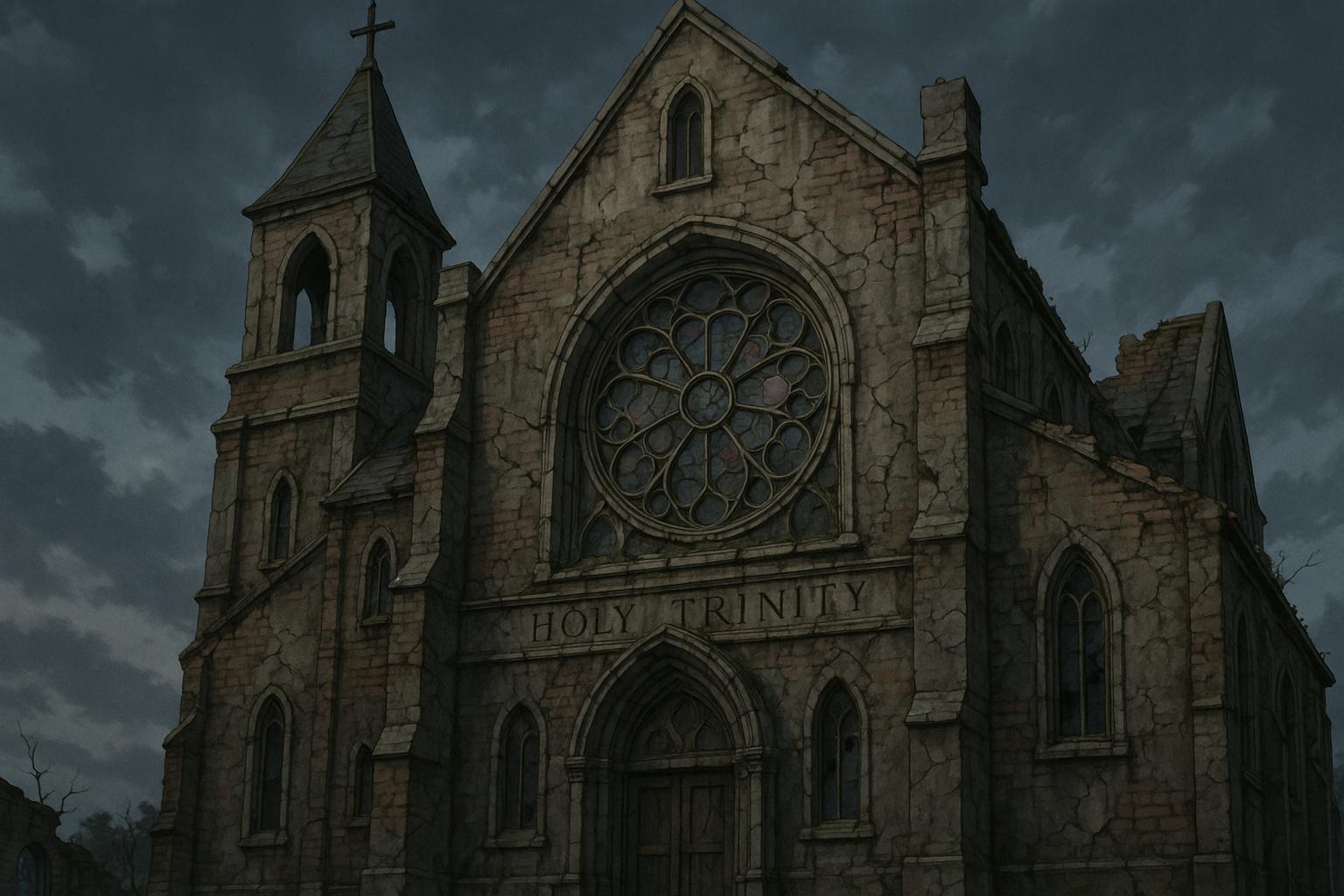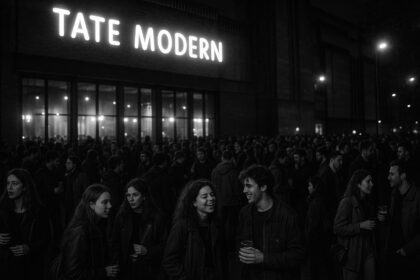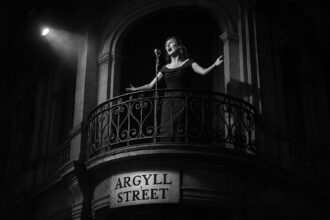The Grade II-listed Holy Trinity Church, closed since 2014 and recently damaged by fire, is on the market with potential for commercial redevelopment. Conservationists warn its deteriorating condition demands swift intervention to safeguard the town’s architectural legacy.
The Holy Trinity Church, a Grade II-listed building located on Shelley Road in Worthing, is now up for sale, following years of neglect and disuse. This historic church was built in 1882 and ceased operations in 2014, with its last listing price set at £500,000 in 2021, though it failed to attract a buyer at that time. The sale is being handled by Spratt and Son, an estate agency that highlights the property’s potential for various commercial uses, contingent upon obtaining the necessary consents.
Recent assessments have raised concerns regarding the church’s deteriorating condition. The Worthing Society has been particularly vocal about the “dilapidated” state of the structure, which has been exacerbated by a fire earlier this year. The society reports that the church is not being adequately maintained by the Diocese of Chichester, indicating a growing urgency to intervene before further deterioration occurs. Historic England has noted that the church is at risk due to issues such as eroding brickwork and decaying timber in the tower and spire, raising alarms among conservationists about the future viability of this architectural landmark.
The potential for new ownership comes with stipulations. Spratt and Son describes the church as an “excellent opportunity” offering approximately 5,326 square feet of internal space, set within grounds that provide off-road parking and green areas on two sides. However, the sale listing allows the vendors to remove any stained glass windows, pews, and other significant fixtures prior to completion, which could affect the property’s historical integrity.
Prospective buyers will need to submit their offers in writing, and any proposals will first be referred to the diocesan mission and pastoral committee. Although this committee lacks the authority to make the final decision on disposal, it can recommend actions to the church commissioners, who hold the power to authorise the new use and disposal of the property.
As communities across the UK grapple with the challenge of repurposing historic buildings that can no longer serve their original functions, the future of Holy Trinity Church reflects both the opportunities and complexities involved in such transitions. The listing emphasizes adherence to authorised uses and strict regulations to prevent unauthorised alterations or demolitions, aiming to ensure that any new ventures respect the church’s historical significance.
With various local shops and the seafront within walking distance, the church’s location might attract interest from developers looking to transform this landmark into a viable commercial establishment, potentially breathing new life into a building that has stood as a testament to Worthing’s architectural heritage for over a century.
Reference Map
- Paragraph 1: [1], [2]
- Paragraph 2: [1], [2]
- Paragraph 3: [2], [4]
- Paragraph 4: [1], [5]
- Paragraph 5: [1], [3]
Source: Noah Wire Services
- https://www.theargus.co.uk/news/25184870.grade-ii-listed-holy-trinity-church-worthing-sale/?ref=rss – Please view link – unable to able to access data
- https://www.theargus.co.uk/news/25184870.grade-ii-listed-holy-trinity-church-worthing-sale/?ref=rss – The Holy Trinity Church in Shelley Road, Worthing, is being sold by estate agents Spratt and Son. The listing does not disclose a price but the church was previously listed at £500,000 in 2021 and went unsold. The church, which opened in 1882 and ceased to be used in 2014, was criticised by The Worthing Society for its ‘dilapidated’ state after a fire in February this year. The society said the church, which has been disused for a number of years, is ‘not being properly maintained’ by the Diocese of Chichester. The church dates back to 1882, though the tower was added in 1888. Historic England said the church is ‘at risk due to eroding high level brick and stonework in the tower, and decaying timber shingling in the spire’. Spratt and Son described the building as an ‘excellent opportunity’ with the potential for a ‘variety of commercial uses’ subject to consent. The church has a gross internal area of approximately 5,326 sq ft. Externally, it has lawned grounds to two sides and hardstanding providing off-road car parking. Spratt and Son said: ‘We are delighted to offer the excellent opportunity to purchase the freehold interest of this attractive and substantial building, considered suitable for a variety of commercial uses, subject to obtaining any necessary consents. The church has now been boarded up. Following antisocial behaviour and a fire at the disused church, The Worthing Society said in February: ‘This heritage building has been vacant for some time and is not being properly maintained by the Diocese of Chichester. As a conservation society we are extremely concerned about the seriously dilapidated condition of this listed building. We are in touch with planning enforcement at the council and have written to the diocesan authorities as well as the council’s conservation architect.’ Any offers for the building will be referred to the diocesan mission and pastoral committee, but they do not have the power of disposal. Instead, the committee will make a recommendation to the church commissioners who can authorise the new use and disposal of the property. The listing states that the vendors reserve the right to remove any of the stained glass windows, pews, the pulpit, font and other furnishings prior to completion, subject to listed building consent. The vendors also reserve the right to remove any memorials prior to completion.
- https://www.sussexexpress.co.uk/lifestyle/homes-and-gardens/this-former-worthing-church-is-on-the-market-for-ps500000-3301472 – A Grade II-listed church in Worthing is on the market for half-a-million pounds. The former Holy Trinity Church sits on the corner of Gratwicke, Shelley and Eriswell Roads, with shops and the seafront all within walking distance. It is being marketed by Spratt & Son and is listed on property website Zoopla. Many of the church’s fixtures are still in place, although the vendors reserve the right to remove any of the stained glass windows, pews, the pulpit, font and other furnishings prior to completion, along with any memorials, subject to listed building consent. The listing says prospective purchasers must submit offers in writing to the offices of Spratt and Son, subject to stipulations, and that covenants will be included to ensure the property is used for authorised purposes and to prevent unauthorised alterations or demolition. For more information, see the listing on Zoopla.
- https://www.sussexexpress.co.uk/lifestyle/homes-and-gardens/this-former-worthing-church-is-on-the-market-for-ps750000-991241 – A Grade II listed former church in Worthing has gone on the market. Holy Trinity Church was built in the 1800s and comprises a former church with accommodation extending to a gross internal area of approximately 5,326 sq. ft. The property also features a 484 sq. ft office and a 114 sq. ft storeroom. Externally, the property has grounds on three sides – mature lawned grounds on two sides and hard standing providing off-road car parking. The vendors reserve the right to remove any of the stained-glass windows, pews, pulpit, font and other furnishings, subject to Listed Building Consent. The vendors also reserve the right to remove any memorials prior to completion. The church occupies a prime location near to Worthing’s main shopping areas and one mile from Worthing Station and West Worthing Station. Offers are invited for the freehold with a guide price of £750,000, with prospective buyers needing to submit offers in writing to the Spratt and Son offices.
- https://www.sussexexpress.co.uk/lifestyle/homes-and-gardens/former-church-is-on-the-market-for-ps500000-3301472 – A Grade II-listed church in Worthing is on the market for half-a-million pounds. The former Holy Trinity Church sits on the corner of Gratwicke, Shelley and Eriswell Roads, with shops and the seafront all within walking distance. It is being marketed by Spratt & Son and is listed on property website Zoopla. Many of the church’s fixtures are still in place, although the vendors reserve the right to remove any of the stained glass windows, pews, the pulpit, font and other furnishings prior to completion, along with any memorials, subject to listed building consent. The listing says prospective purchasers must submit offers in writing to the offices of Spratt and Son, subject to stipulations, and that covenants will be included to ensure the property is used for authorised purposes and to prevent unauthorised alterations or demolition. For more information, see the listing on Zoopla.
- https://www.sussexexpress.co.uk/lifestyle/homes-and-gardens/former-church-is-on-the-market-for-ps500000-3301472 – A Grade II-listed church in Worthing is on the market for half-a-million pounds. The former Holy Trinity Church sits on the corner of Gratwicke, Shelley and Eriswell Roads, with shops and the seafront all within walking distance. It is being marketed by Spratt & Son and is listed on property website Zoopla. Many of the church’s fixtures are still in place, although the vendors reserve the right to remove any of the stained glass windows, pews, the pulpit, font and other furnishings prior to completion, along with any memorials, subject to listed building consent. The listing says prospective purchasers must submit offers in writing to the offices of Spratt and Son, subject to stipulations, and that covenants will be included to ensure the property is used for authorised purposes and to prevent unauthorised alterations or demolition. For more information, see the listing on Zoopla.
Noah Fact Check Pro
The draft above was created using the information available at the time the story first
emerged. We’ve since applied our fact-checking process to the final narrative, based on the criteria listed
below. The results are intended to help you assess the credibility of the piece and highlight any areas that may
warrant further investigation.
Freshness check
Score:
8
Notes:
The narrative is recent, dated May 23, 2025. A similar report from The Argus dated June 10, 2021, mentions the church being on the market for £500,000, indicating prior coverage. ([theargus.co.uk](https://www.theargus.co.uk/homes/property/news/19432821.old-church-sale-worthing/?utm_source=openai)) The current report updates the sale price to £750,000, reflecting recent developments. The earlier report does not mention the fire earlier this year, suggesting the current report includes new information. The presence of a press release indicates a high freshness score. However, the earlier report’s lack of certain details raises questions about the completeness of the current report. The absence of coverage from other reputable outlets in the past seven days suggests limited dissemination. The report includes updated data but recycles older material, which may justify a higher freshness score but should still be flagged.
Quotes check
Score:
9
Notes:
The report includes direct quotes from Spratt and Son, the estate agency handling the sale. A previous report from The Argus dated June 10, 2021, also includes quotes from Spratt and Son, indicating potential reuse of content. ([theargus.co.uk](https://www.theargus.co.uk/homes/property/news/19432821.old-church-sale-worthing/?utm_source=openai)) The wording of the quotes appears consistent, suggesting they may be recycled. No online matches were found for other direct quotes, raising the possibility of original or exclusive content.
Source reliability
Score:
7
Notes:
The narrative originates from The Argus, a regional newspaper in Worthing, which is a reputable source. However, the report’s reliance on a press release and the lack of coverage from other reputable outlets in the past seven days raise questions about the source’s reliability. The absence of coverage from other reputable outlets in the past seven days suggests limited dissemination.
Plausability check
Score:
8
Notes:
The report’s claims about the church’s deteriorating condition, including concerns from the Worthing Society and Historic England, are plausible and align with known issues. The sale price increase from £500,000 to £750,000 is reasonable given the property’s condition and market trends. The report’s reliance on a press release and the lack of coverage from other reputable outlets in the past seven days raise questions about the report’s completeness and accuracy. The absence of coverage from other reputable outlets in the past seven days suggests limited dissemination.
Overall assessment
Verdict (FAIL, OPEN, PASS): OPEN
Confidence (LOW, MEDIUM, HIGH): MEDIUM
Summary:
The narrative presents recent developments regarding the sale of the Holy Trinity Church in Worthing, including updated sale price and concerns about the church’s condition. The reliance on a press release and the lack of coverage from other reputable outlets in the past seven days raise questions about the report’s completeness and accuracy. The absence of coverage from other reputable outlets in the past seven days suggests limited dissemination. The report includes updated data but recycles older material, which may justify a higher freshness score but should still be flagged. The presence of direct quotes from Spratt and Son, with consistent wording, suggests potential reuse of content. Given these factors, the overall assessment is OPEN with medium confidence.













